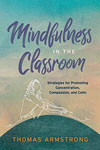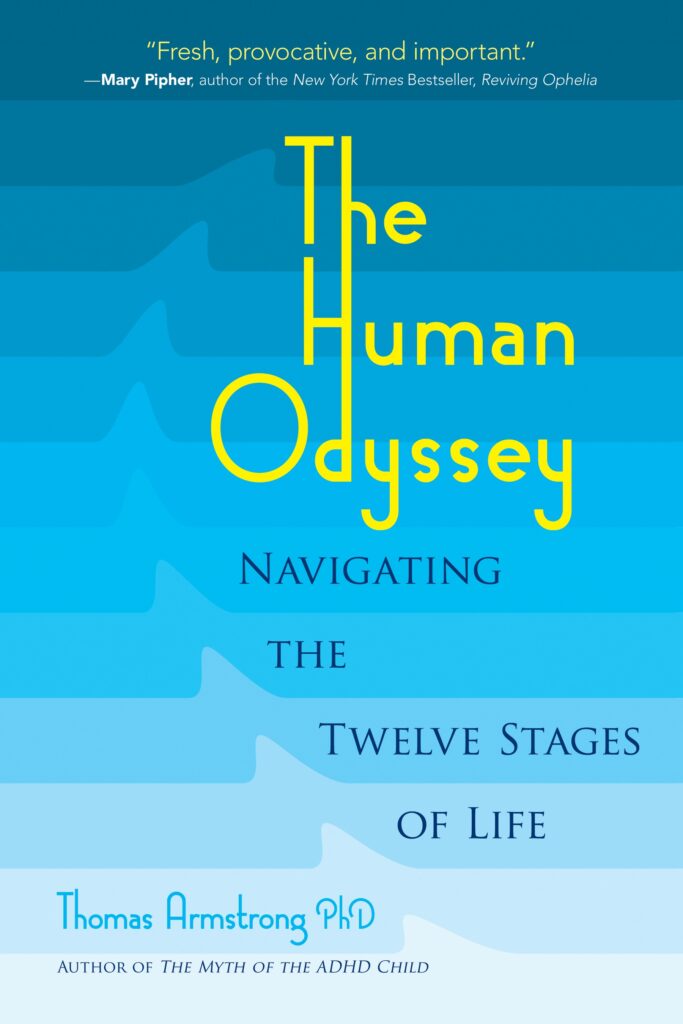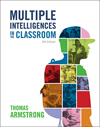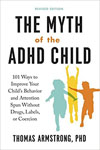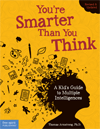 Most people think of ADHD as a discrete medical disorder. However, I’ve suggested that the symptoms associated with ADHD can be accounted for in terms of a wide variety of other influences. So far in my You Tube video series on The Myth of the ADHD, I’ve talked about the impact of media, all-boy behavior, developmental delay, inappropriate schooling practices, and alternative modes of paying attention as contributing factors to an ADHD diagnosis. In this video I add to this list the concept of Adverse Childhood Experiences (ACEs). These include child abuse, child neglect, poverty, a parent or caregiver’s mental illness or incarceration, poverty, domestic violence and other negative environmental influences. Recent research has strongly suggested that the more ACEs a child experiences, the greater his chances of being diagnosed with ADHD. Below the video I’ve included a written transcript with links to some of the research I’ve cited. Food for thought.
Most people think of ADHD as a discrete medical disorder. However, I’ve suggested that the symptoms associated with ADHD can be accounted for in terms of a wide variety of other influences. So far in my You Tube video series on The Myth of the ADHD, I’ve talked about the impact of media, all-boy behavior, developmental delay, inappropriate schooling practices, and alternative modes of paying attention as contributing factors to an ADHD diagnosis. In this video I add to this list the concept of Adverse Childhood Experiences (ACEs). These include child abuse, child neglect, poverty, a parent or caregiver’s mental illness or incarceration, poverty, domestic violence and other negative environmental influences. Recent research has strongly suggested that the more ACEs a child experiences, the greater his chances of being diagnosed with ADHD. Below the video I’ve included a written transcript with links to some of the research I’ve cited. Food for thought.
Video Transcript
Hi, I’m Dr. Thomas Armstrong. This is part 7 of my 12-part video series on The Myth of the ADHD Child. This video is entitled ‘’Is It ADHD, or Adverse Childhood Experiences (ACEs)?’’
Let me preface this presentation by saying that I DO believe that ADHD symptoms exist. But I believe after 50 years of studying this issue, that the hypothesis that there is a specific medical disorder called ADHD causing these symptoms is wrong and that there are many other points of view that can account for these symptoms. In part 1 of this video series, I explain why I call ADHD a myth. In this video, I look at how what is viewed as ADHD may actually instead be adverse childhood experiences or ACEs.
One of nature’s plans for human evolution was to create humans who are born with developmentally immature nervous systems. This evolutionary feature allowed for environmental influences after birth to be hard-wired into the brain, thus improving a human being’s adaptability to the world. Because of this plan, infants, children, and teens depend upon individuals with mature nervous systems (i.e., adults) to bring them into maturity physically, emotionally, mentally, socially, and morally. This situation requires that the adults provide dependable, nourishing, inspiring care for those who are dependent on them. As long as the adults of a community provide these nurturing influences, the all-important process of maturation can take place over a period of roughly twenty years.
But sometimes the adults are not there to support infants, children, and teens. In these cases, there is an absence of care and nurturing, and what is worse, there are all too often negative influences such as child abuse, child neglect, and poverty that damage the child’s chances for growing up optimally. It is this absence of care and the presence of injurious influences that I want to speak about in this video. I want to particularly discuss how these factors may be related to the incidence of ADHD among children, teens, and adults in our society.
In the late 1990’s, a new metric was created to measure the extent of these negative influences on children: adverse childhood experiences, A-C-E-s or ACEs. This came about as a result of a longitudinal study conducted through the Kaiser Permanente health management organization, to study the impact of a range of such negative experiences as domestic violence, mental illness, child abuse, and child neglect. This slide [slide 4] shows one of the very first reports to come out in 1988 reporting the results of this on-going study. Note that we’re talking about a metric that is only twenty-five years old. The field of ADHD was almost twenty years old by the time ACEs became an important topic of research.
The Centers for Disease Control and Prevention or the CDC, defines Adverse Childhood Experiences or ACEs as ‘’potentially traumatic events that occur in childhood (0-17 years). For example, experiencing violence, abuse, or neglect, witnessing violence in the home or the community.’’ Researchers have different ideas about the number of ACEs that we should be concerned about, with some touting 6 of them, others 8 or 12. In this presentation, I’ll be focusing on 10.
Over 600,000 children are abused every year in the United States, and this is probably a low figure since in many cases, abuse goes unreported. Approximately one in four children experience child abuse or neglect in their lifetime. Eighteen percent of all cases of child abuse reported annually, are due to physical abuse. The fatality rate for child maltreatment is 2.2 per 1000 children annually, making homicide the second leading cause of death in children younger than age one.
Young age, prematurity, special needs, twins, colic/crying, behavior problems, and toilet training/accidents increase the risk for child physical abuse. Perpetrator risk factors include poverty, parental alcohol or drug abuse, and domestic violence in the home; 91% of the time the perpetrator is a parent.
According to the CDC, childhood emotional abuse is a more hidden form of childhood maltreatment. They characterize it as behaviors that harm a child’s self-worth or emotional well-being, with examples including name-calling, shaming, rejecting, withholding love, and threatening. According to the National Institutes of Health or NIH, 8% of the total 688,000 reported cases of maltreatment in 2010 were categorized as emotional abuse.
However, according to the journal Child Abuse and Neglect, empirical studies have suggested prevalence rates of emotional abuse ranging from 12% to 48%, varying between samples studied (cited here). Stanford Medicine reports that over the last year of the pandemic (2022-2023), more than half of U.S. high school students (55%) reported experiencing emotional abuse by a parent or other adult in the home.
The prevalence of child sexual abuse is difficult to determine because it is often not reported. According to the CDC, one in four girls and 1 in 13 boys report experiencing sexually abuse between the ages of 0 and 17 years of age. Someone known and trusted by the child or child’s family members, perpetrates 91% of child sexual abuse.
According to the The National Child Traumatic Stress Network: ‘’Abusers often do not use physical force, but may use play, deception, threats, or other forms of coercion to engage children and maintain their silence. Abusers frequently employ persuasive and manipulative tactics to keep the child engaged. These tactics—referred to as “grooming”—may include buying gifts or arranging special activities, which can further confuse the victim.’’ Children are also being exploited through child pornography, advertising campaigns, and other media channels. The National Center for Missing and Exploited Children says that there were over 32 million reports of child sexual exploitation in 2022 in the U.S.
Childhood neglect represents by far the largest proportion of child maltreatment cases. They compose seventy-eight percent of all child abuse incidents in the U.S. according to the National Institutes of Health.
According to Psychology Today, ‘’ Child neglect is defined as any egregious act or omission by a parent or other caregiver that deprives a child of basic age-appropriate needs and thereby results, or has reasonable potential to result, in physical or psychological harm. Younger children are neglected most, and more girls suffer from neglect than boys.
Homelessness is one factor that increases the odds of physical and emotional neglect. A 2021 study by the Childcare Services Association found that 1.3 million infants, toddlers, and preschoolers —1-in-18 children under the age of 6 — experience homelessness every year.
According to one pediatric textbook: Developmental-Behavioral Pediatrics, 4th edition, ”Emotional neglect can be defined as a ‘’relationship pattern in which an individual’s affectional needs are consistently disregarded, ignored, invalidated, or unappreciated by a significant other. People in neglectful families are emotionally disconnected from one another, behaving as if they were living on different planets’’
There are also more all-pervading influences in the home or community that serve as adverse factors for infants, children, and teens. First on the list is mental illness in the family. The National Institutes of Health estimates that more than one in five U.S. adults live with a mental illness (57.8 million in 2021).
These conditions include depression, bipolar disorder, anxiety disorders, schizophrenia, and personality disorders. Mental illness casts a pall over entire families (I know this from experience, my pediatrician father suffered from depression for two decades while I was growing up and it was pretty traumatic for me).
Incarceration of a close relative also represents a factor of adversity for many children. Among the more than 800,000 parents in federal and state prisons, 92 percent are fathers. Incarceration represents an institutional form of child neglect, where kids are deprived of their family’s chief wage earner as well as their loving care as well as the stigma that comes from having a parent or guardian in jail.
Hispanic and especially Black children are at much higher risk of experiencing the incarceration of a parent or other household member, compared with Whites. An analysis of a 1990 birth cohort found that while White children had a 3.6–4.4% cumulative risk of experiencing parental incarceration by age 14, Black children in the same age cohort had a 25–28% cumulative risk.
Mothers being treated violently represent another Adverse Childhood Experience. According to the Resource Center on Domestic Violence, ‘’Researchers have estimated that between 3.3 million and 10 million children are exposed to adult domestic violence each year.’’
A National Intimate Partner and Sexual Violence Survey reports that 1 in 3 women have experienced some form of physical violence by an intimate partner. This includes a range of behaviors (e.g., slapping, shoving, pushing) and in some cases might not be considered “domestic violence.” 1 in 7 women have been injured by an intimate partner and 1 in 10 women have been raped by an intimate partner.
Substance abuse by a family member or close relative also represents a toxic influence on infants, children, and teens. This includes unauthorized use of prescription medicines such as opioids, Illegal drugs such as cannabis, LSD, ecstasy, heroin, and cocaine, alcohol such as wine, gin, vodka, and beer., and solvents such as aerosols and glue.
According to the National Center for Drug Abuse Statistics, among Americans aged 12 years and older, 37.3 million were current illegal drug users (used within the last 30 days) as of 2020. The 2021, National Survey on Drug Use and Health reports 60.0 million people ages 12 and older (21.5% in this age group) reported binge drinking in the past month (defined as consuming five or more alcoholic drinks for males or four or more alcoholic drinks for females on the same occasion on at least 1 day in the past month.
The marital strife that accompanies many marital separations and divorces represents a trauma for kids, but even amicable divorces serve as stressors for them.
As Liz Becker, president and founder of the National Association of Divorce Professionals, points out, kids are ‘’often experiencing instability and uncertainty in their family and at home for the first time in their lives. Quite often the parents display extreme rage, and the economic stress of divorce takes its toll on the entire household. Children often find themselves being bounced back and forth between different houses, are often faced with moving out of the only home they have known and are being separated from one or both parents during this chaotic time.’’
I should also mention that other ACEs could and should be added to this list. Poverty or low socio-economic status is one important area left out of this list. Violence in the broader community is another. Natural disasters (such as hurricanes, wildfires, floods, earthquakes, and tornados) also represent a further source of trauma.
The impact of these adverse situations on children is far-reaching. According to the Centers for Disease Control and Prevention, ‘’Toxic stress from ACEs can negatively affect children’s brain development, immune systems, and stress-response systems. These changes can affect children’s attention, decision-making, and learning. Children growing up with toxic stress may have difficulty forming healthy and stable relationships.’’ Since we’re now going to be taking up the issue of how ACEs relate to ADHD, please note that this statement indicates the negative impact of toxic stress on a child’s attention.
The research literature on the impact of adverse childhood experiences on ADHD is relatively recent but robust. I don’t want to bore you with a lot of research studies, but very quickly want to list key findings from some studies completed in the past seven years. This 2016 study, for example, suggests that a child’s number of ACEs at age 5 predicted their having ADHD at age 9.
This 2017 study [slide 29] similarly suggested that children with 2, 3, or 4 adverse childhood experiences were significantly more likely to have moderate to severe ADHD.
This 2021 study [slide 30] suggested that the ACE of living with a family members having a mental illness represents the strongest predictor of giving rise to ADHD, followed by having a parent or guardian incarcerated.
This 2017 study [slide 31] based on studying over half a million teens and young adults in Sweden found a dose-response relationship between ACEs and ADHD. That is, the more ACEs found, the greater the likelihood of their having ADHD. You see here family death (not mentioned earlier) as a significant factor, almost doubling the likelihood of ADHD, while a family receiving public assistance (an indicator of poverty) almost tripled the risk.
The ADHD community seems now to have woken up this literature and recognized the importance of these adverse childhood experiences. Their 2022 consensus statement, signed by over sixty experts in the field, includes a section on studies relating to ACEs and their impact upon a diagnosis of ADAHD. Their consensus statement had no mention of them whatsoever.
Finally, and perhaps most startlingly, this Danish study suggested that a child’s chances of having ADHD could be predicted by the level of adversity he or she was experiencing in infancy.
As we look back at what I’ve just presented, we’re faced with some interesting questions. Do ACEs actually cause ADHD? Or do perhaps a subset of the kids diagnosed with ADHD have symptoms mainly because of their ACEs? Or, do some kids have initial genetic susceptibilities that interact with adverse environmental influences to create the symptoms of ADHD. My own sense is that these studies undermine the idea of ADHD as being a discrete disorder standing on its own two feet, so to speak. This, of course, has been my contention with each video in this series. That there are other influences than the disorder called ADHD, that produce the symptoms we associate with it (hyperactivity, impulsivity, distractibility).
That’s part of the reason why I call ADHD a myth in my book The Myth of the ADHD Child: 101 Ways to Improve Your Child’s Behavior and Attention Span without Drugs, Labels, or Coercion. Thanks so much!
For more information about adverse childhood experiences and ADHD, and other themes of this video series, see my book The Myth of the ADHD Child: 101 Ways to Improve Your Child’s Behavior and Attention Span without Drugs, Labels, or Coercion. It’s available through online stores like Amazon, national chains like Barnes and Noble, and independent bookstores worldwide. It’s also available as an audio recording on Audible. See also my book for K-12 educators: ADD/ADHD Alternatives in the Classroom. And make sure to watch my other videos in this series on You Tube. Thanks so much!
This blog post was brought to you by Thomas Armstrong, Ph.D. and www.institute4learning.com.
Follow me on Twitter: @Dr_Armstrong








